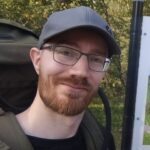Lien vers Pubmed [PMID] – 37926786
Lien DOI – 10.1002/smtd.202300719
Small Methods 2024 Jan; 8(1): e2300719
Cells are highly dynamic and adopt variable shapes and sizes. These variations are biologically important but challenging to investigate in a spatiotemporally controlled manner. Micropatterning, confining cells on microfabricated substrates with defined geometries and molecular compositions, is a powerful tool for controlling cell shape and interactions. However, conventional binary micropatterns are static and fail to address dynamic changes in cell polarity, spreading, and migration. Here, a method for dynamic micropatterning is reported, where the non-adhesive surface surrounding adhesive micropatterns is rapidly converted to support specific cell-matrix interactions while allowing simultaneous imaging of the cells. The technique is based on ultraviolet photopatterning of biotinylated polyethylene glycol-grafted poly-L-lysine, and it is simple, inexpensive, and compatible with a wide range of streptavidin-conjugated ligands. Experiments using biotinylation-based dynamic micropatterns reveal that distinct extracellular matrix ligands and bivalent integrin-clustering antibodies support different degrees of front-rear polarity in human glioblastoma cells, which correlates to altered directionality and persistence upon release and migration on fibronectin. Unexpectedly, however, neither an asymmetric cell shape nor centrosome orientation can fully predict the future direction of migration. Taken together, biotinylation-based dynamic micropatterns allow easily accessible and highly customizable control over cell morphology and motility.
